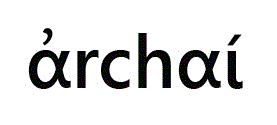Abstract:
Aristotle, in De motu animalium uses the analogical method to research on animal’s movement common cause by establishing the paradigm of the articulated member. However, the articulated member does not present itself as a model in a direct way; in fact, it is converted into a model. Textually, the establishment of the paradigm, or modeling, begins in 698a17 and goes up to 698b4, including three stages: reference to the joints followed by the geometrization of the articulated member’s movement, which comprises three subdivisions: the comparison of the articulation to the center, the radical geometrization that is the comparison to the diameter, and the relativization of the geometric comparison; and finally, the return to the nature of the articulation through the anatomical model of the articulated member, the culminating point of the modeling process. In the present article, we would like to analyze the construction of this paradigm, in which, paradoxically, the methodological strategies culminate by showing immobility in limb mobility, an unexpected image in action to the subject of the De motu animalium.
Keywords:
Aristotle; De motu animalium; articulated member; analogical method; geometrization
